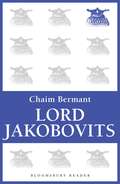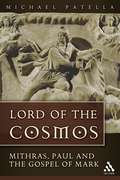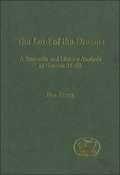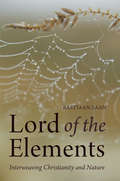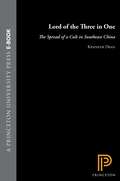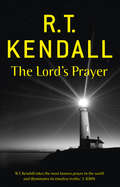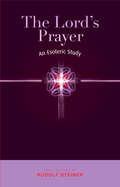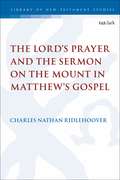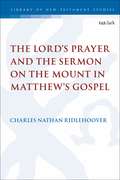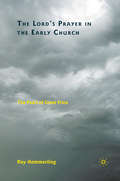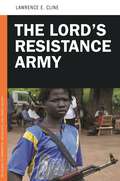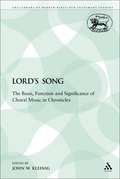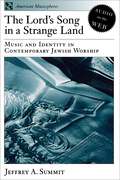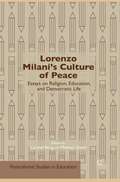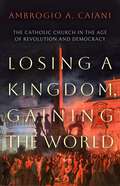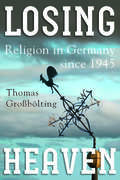- Table View
- List View
Lord Ganesha (Large print)
by RnibThis image shows the figure of a seated Hindu god Ganesha. There is a locator dot shown, which will be at the top left of the page when the image is the correct way up. Ganesha is facing forward so all facial features, and all arms and both legs can be found. In the top centre of the image is Ganesha's elephant head. He wears a golden crown which has a red jewel set in the middle of the front of it. His head has two large eyes with eyebrows and a large elephant ear to the left and right. He has tusks but the one to the left is broken. His elephant trunk goes down and curls up to the left. His mouth cannot be found. His body is that of a pot-bellied human with four arms. He is naked from the waist up. The lower arm on the left is bent at the elbow and the hand is palm facing with the fingers pointing up. Ganesha is giving a blessing. The upper hand to the left holds an axe. The upper hand on the right holds a lotus flower. The lower hand on the right holds a dish of sweets. He is sitting on a decorative gold seat. His leg on the right is folded so the foot rests on the leg on the left. At the bottom of the page there is a mouse near Ganesha's foot.
Lord Ganesha (Uncontracted)
by RnibThis image shows the figure of a seated Hindu god Ganesha. There is a locator dot shown, which will be at the top left of the page when the image is the correct way up. Ganesha is facing forward so all facial features, and all arms and both legs can be found. In the top centre of the image is Ganesha's elephant head. He wears a golden crown which has a red jewel set in the middle of the front of it. His head has two large eyes with eyebrows and a large elephant ear to the left and right. He has tusks but the one to the left is broken. His elephant trunk goes down and curls up to the left. His mouth cannot be found. His body is that of a pot-bellied human with four arms. He is naked from the waist up. The lower arm on the left is bent at the elbow and the hand is palm facing with the fingers pointing up. Ganesha is giving a blessing. The upper hand to the left holds an axe. The upper hand on the right holds a lotus flower. The lower hand on the right holds a dish of sweets. He is sitting on a decorative gold seat. His leg on the right is folded so the foot rests on the leg on the left. At the bottom of the page there is a mouse near Ganesha's foot.
Lord Jakobovits
by Chaim BermantLord Jakobovits has been described by one commentator as Mrs Thatcher's father confessor. A staunch defender of Victorian values and family life, he has propounded his views with a forthrightness and vigour which have often placed him at the centre of controversy and have given him national prominence. And yet, if extremely conservative on some issues, he can be surprisingly liberal on others, and he is the only Orthodox rabbi of any eminence to have openly expressed his misgivings about Israel's treatment of the Palestinians and to have called for territorial concessions in the West Bank and Gaza. He is in fact difficult to categorise, and this vividly written, authorised biography attempts to reconcile the apparent contradictions in his views. It also describes the man, his colourful, vivacious wife, the circumstances and convictions which have helped to shape him, and the communities who identities he has helped to guide. Though not uncritical, it adds up to a remarkable portrait of a remarkable man.
Lord of the Cosmos: Mithras, Paul, and the Gospel of Mark
by Osb Michael PatellaIn Lord of the Cosmos, Patella demonstrates the ways in which the Roman Imperial religion imbues Paul's letter and subsequently Mark's Gospel. Mark resonated in the imperial capital and beyond because of its inherent participationist theology, a theology probably augmented by Paul and possibly introduced by him. In his own writings, Paul draws from Mithraic vocabulary and symbolism. Mithraism itself functions within the cosmic framework outlined in Plato's Timaeus. Pauline theology, with its Mithraic overtones, coheres with the Markan theme of Christ's cosmic victory over Satan; Paul and Mark share a similar view of Christ's salvific act. With the Bartimaeus pericope (10:46-52), the Markan Gospel demonstrates that believers, by their call to discipleship, participate in that victory. This whole process is signaled by the baptism with its divine communication and actions of descent and ascent, a strong Pauline concept. Patella shows that the Markan presentation of Jesus' death, the climax of the narrative, brings the act of divine communication full circle. At the baptism, God communicates to creation, and with Jesus' cry from the cross, creation replies in despair. Jesus' death is not the end of the story, however. The women at the tomb realize this fact and are awestruck at its significance, which is the reason that they do not tell anyone what they have witnessed. The notice to meet Jesus in Galilee is an affirmation of the resurrection. By moving from the area of the dead, that is the tomb, to the land of the living, Galilee, Mark echoes the cosmic theology in Paul, which moves from life to death, and back to eternal life.
The Lord of the Dreams: A Semantic and Literary Analysis of Genisis 37-50 (The Library of Hebrew Bible/Old Testament Studies)
by Ron PirsonA fascinating and highly original new look at the Joseph-narrative which relies a good deal on syntactic and semantic analyses. Pirson shows that there are many elements in this story that provoke a significantly different reading of the story of Joseph and his brothers, especially when these are combined with some textual aspects previously unnoticed or neglected. Special attention is given to the meaning of Joseph's dreams, to the question of who actually sold Joseph, and to the brothers' role in the narrative. Pirson also asks why Joseph did not call home after his release from prison, and-the most important question-why did Joseph, who was Jacob's favourite son, disappear from the biblical history of Israel?
Lord of the Elements: Interweaving Christianity and Nature
by Bastiaan BaanThe four classical elements of earth, water, air and fire are present in Genesis and continue to be significant throughout Christianity. Different streams of thought, such as the School of Chartres, and Celtic Christianity, have emphasised them in different ways. In this unique book, Bastiaan Baan, an experienced spiritual thinker, brings these elements together with ideas from Rudolf Steiner's anthroposophy. He considers, in particular, how elemental beings -- nature spirits -- relate to the four elements, and explores the role of elemental beings in our world. This is a fascinating and original work on the connections between Christianity and the natural world.
Lord of the Three in One: The Spread of a Cult in Southeast China
by Kenneth DeanLin Zhao'en (1517–1598) set out to popularize Confucianism by combining Confucian studies with Daoist inner alchemical techniques and Buddhist Chan philosophy into something he called the Three in One Teachings. Despite periods of clandestine activity since its inception, the Three in One cult has undergone a remarkable revival in post-Mao China: today Lin is worshipped throughout Southeast China and Southeast Asia as Lord of the Three in One in over a thousand temples by tens of thousands of cult initiates. Many of the temples have been restored since 1979, when China began to experience an explosive resurgence of popular culture and religion. In this book, based on ten years of field work, Kenneth Dean vividly documents the reemergence of this cult, which seeks to transmit a universal vision of truth yet retains a strong local appeal through its healing rituals and spirit mediumism. Although the Chinese government still tries to suppress these resurgences in the interest of modernization, the cult's locally based networks appear in this account as unstoppable social forces.Dean explores the organization and transmission of the Three in One's unique cultural vision, the reception of this vision, and the construction of subjectivity within a vibrant ritual tradition. Outlining such features as inner alchemical meditation, scripture and iconography, ritual practice, and spirit mediumism, he demonstrates the cult's transformative potential as well as its contemporaneity and dynamism. Rural Chinese popular culture as a whole emerges here as highly complex and always evolving--traditional and resilient.
Lord Shiva (Large print)
by RnibThis image shows the figure of the seated Hindu god Shiva. There is a locator dot shown, which will be at the top left of the page when the image is the correct way up. Shiva's head is in the top centre of the page. He has long straight black hair and a topknot. From the top of the topknot is an arc of water which goes up, to the right and down. When it hits the ground it forms the source of the sacred River Ganga. To the left of his head is a small crescent which symbolises the control of time. His face is blue and he has a third eye in his forehead representing wisdom. This is partly hidden by three short horizontal grey lines of ash symbolising his superhuman power. He has a tranquil smile despite his role as the destroyer of the world (so it can be reborn). His body is not blue but pale and sometimes white from a coating of ash. He has a cobra necklace which winds round his neck twice with its head to the left of his neck. The cobra represents his power. Shiva is naked apart from a simple animal skin loincloth. He has an arm and wrist bracelet on each arm. The arm to the left goes down and is bent at the elbow with the lower arm coming towards you. The hand is bent up so the palm shows and the fingers point upwards. This hand hides his nipple on the left. To the right of his bare chest, the arm on the right is straight, going down and right. The hand is open and palm upwards. He is sitting in a crossed-leg yogic position so each of his feet rests on the calf of the other leg. They are positioned sole upwards. He sits on a tiger skin which shows his victory over force. On the left of the page is a trident which represents the three functions of the Hindu triumvirate.
Lord Shiva (UEB Contracted)
by RnibThis image shows the figure of the seated Hindu god Shiva. There is a locator dot shown, which will be at the top left of the page when the image is the correct way up. Shiva's head is in the top centre of the page. He has long straight black hair and a topknot. From the top of the topknot is an arc of water which goes up, to the right and down. When it hits the ground it forms the source of the sacred River Ganga. To the left of his head is a small crescent which symbolises the control of time. His face is blue and he has a third eye in his forehead representing wisdom. This is partly hidden by three short horizontal grey lines of ash symbolising his superhuman power. He has a tranquil smile despite his role as the destroyer of the world (so it can be reborn). His body is not blue but pale and sometimes white from a coating of ash. He has a cobra necklace which winds round his neck twice with its head to the left of his neck. The cobra represents his power. Shiva is naked apart from a simple animal skin loincloth. He has an arm and wrist bracelet on each arm. The arm to the left goes down and is bent at the elbow with the lower arm coming towards you. The hand is bent up so the palm shows and the fingers point upwards. This hand hides his nipple on the left. To the right of his bare chest, the arm on the right is straight, going down and right. The hand is open and palm upwards. He is sitting in a crossed-leg yogic position so each of his feet rests on the calf of the other leg. They are positioned sole upwards. He sits on a tiger skin which shows his victory over force. On the left of the page is a trident which represents the three functions of the Hindu triumvirate.
Lord Shiva (UEB Uncontracted)
by RnibThis image shows the figure of the seated Hindu god Shiva. There is a locator dot shown, which will be at the top left of the page when the image is the correct way up. Shiva's head is in the top centre of the page. He has long straight black hair and a topknot. From the top of the topknot is an arc of water which goes up, to the right and down. When it hits the ground it forms the source of the sacred River Ganga. To the left of his head is a small crescent which symbolises the control of time. His face is blue and he has a third eye in his forehead representing wisdom. This is partly hidden by three short horizontal grey lines of ash symbolising his superhuman power. He has a tranquil smile despite his role as the destroyer of the world (so it can be reborn). His body is not blue but pale and sometimes white from a coating of ash. He has a cobra necklace which winds round his neck twice with its head to the left of his neck. The cobra represents his power. Shiva is naked apart from a simple animal skin loincloth. He has an arm and wrist bracelet on each arm. The arm to the left goes down and is bent at the elbow with the lower arm coming towards you. The hand is bent up so the palm shows and the fingers point upwards. This hand hides his nipple on the left. To the right of his bare chest, the arm on the right is straight, going down and right. The hand is open and palm upwards. He is sitting in a crossed-leg yogic position so each of his feet rests on the calf of the other leg. They are positioned sole upwards. He sits on a tiger skin which shows his victory over force. On the left of the page is a trident which represents the three functions of the Hindu triumvirate.
Lord Vishnu (Large print)
by RnibThis image shows the figure of a standing Hindu god Vishnu. There is a locator dot shown, which will be at the top left of the page when the image is the correct way up. Vishnu is facing forward so all facial features, and all arms and both legs can be found. In the top centre of the image is his head. He wears a golden crown. To the left and right of his face he has wavy black hair. His skin is blue. He has two gold necklaces around his neck. The one nearest his neck has a gold decoration set with a red jewel. His chest is bare and he wears a long sleeveless jacket which comes down to his knees. He has a sash around his waist which is held in place by a large knot. The ends of the sash hang down from the knot. Around his waist and legs he wears a dhoti which is a long loincloth. At the centre bottom of the page his bare feet stand on a lotus flower. Vishnu has four arms. Each hand holds a different item. The hand in the top left holds a discus. The other arm is hanging down and the hand holds the handle to a mace decorated with red and green jewels. The hand on the upper arm on the right holds a conch shell. The other hand holds a lotus flower. The items Vishnu holds all have different symbolism.
Lord Vishnu (UEB Contracted)
by RnibThis image shows the figure of a standing Hindu god Vishnu. There is a locator dot shown, which will be at the top left of the page when the image is the correct way up. Vishnu is facing forward so all facial features, and all arms and both legs can be found. In the top centre of the image is his head. He wears a golden crown. To the left and right of his face he has wavy black hair. His skin is blue. He has two gold necklaces around his neck. The one nearest his neck has a gold decoration set with a red jewel. His chest is bare and he wears a long sleeveless jacket which comes down to his knees. He has a sash around his waist which is held in place by a large knot. The ends of the sash hang down from the knot. Around his waist and legs he wears a dhoti which is a long loincloth. At the centre bottom of the page his bare feet stand on a lotus flower. Vishnu has four arms. Each hand holds a different item. The hand in the top left holds a discus. The other arm is hanging down and the hand holds the handle to a mace decorated with red and green jewels. The hand on the upper arm on the right holds a conch shell. The other hand holds a lotus flower. The items Vishnu holds all have different symbolism.
Lord Vishnu (UEB uncontracted)
by RnibThis image shows the figure of a standing Hindu god Vishnu. There is a locator dot shown, which will be at the top left of the page when the image is the correct way up. Vishnu is facing forward so all facial features, and all arms and both legs can be found. In the top centre of the image is his head. He wears a golden crown. To the left and right of his face he has wavy black hair. His skin is blue. He has two gold necklaces around his neck. The one nearest his neck has a gold decoration set with a red jewel. His chest is bare and he wears a long sleeveless jacket which comes down to his knees. He has a sash around his waist which is held in place by a large knot. The ends of the sash hang down from the knot. Around his waist and legs he wears a dhoti which is a long loincloth. At the centre bottom of the page his bare feet stand on a lotus flower. Vishnu has four arms. Each hand holds a different item. The hand in the top left holds a discus. The other arm is hanging down and the hand holds the handle to a mace decorated with red and green jewels. The hand on the upper arm on the right holds a conch shell. The other hand holds a lotus flower. The items Vishnu holds all have different symbolism.
The Lord's Prayer: Insight And Inspiration To Draw You Closer To Him
by R.T. KendallBringing his insightful and down-to-earth approach to bear on the topic of The Lord's Prayer, R.T. Kendall opens up new depths in this short prayer, exploring the full range of meaning in each line to establish firm principles for all our prayer. Starting from the initial focus on God, through asking for what God wants in our world, then on to our needs, and so finally on to the benediction with which the prayer closes, he unpacks the meaning of each line, brings personal challenges to bear on our own lives, and gives us the reassurance of God's love and care for us.
The Lord's Prayer: An Esoteric Study
by Rudolf SteinerThe Lord's Prayer stands at the heart of Christianity. Over the past two millennia it has been spoken millions of times by millions of people around the world. Rudolf Steiner affirms the power of this prayer, given by Jesus Christ himself, and encourages us to begin to understand it at deeper levels. Such an understanding, he explains, is now necessary for humanity's further development. In the four lectures he gave on this subject, collected here under one cover, Rudolf Steiner penetrates the esoteric meanings of the Lord's Prayer, relating its seven petitions to the seven spiritual and physical bodies of the human being. He also discusses the difference between prayer and meditation, and shows how true prayer is selfless in nature. This volume features an introduction by Judith von Halle, whose work is valued for her experiential knowledge of the Lord's Prayer and the events of Christ's life.
The Lord's Prayer and the Sermon on the Mount in Matthew's Gospel (The Library of New Testament Studies)
by Charles Nathan RidlehooverCharles Nathan Ridlehoover examines the Lord's Prayer in Matthew's Gospel, focusing on the prayer's centrality and showing how this centrality affects our reading of the Sermon on the Mount and subsequently, the prayer itself. Ridlehoover argues that the Lord's Prayer is structurally, lexically, and thematically central to the Sermon on the Mount, and the means through which disciples of Jesus are empowered to live out the kingdom righteousness it defines. In turn, the Sermon on the Mount clarifies what the answer to the petitions of the Lord's Prayer might look like in the life of the disciple of Jesus.Whilst the centrality of the Lord's Prayer has been noted by previous commentators, this centrality and its intended purpose has not hitherto been defined or examined in great depth. Ridlehoover fills this gap with a closely argued and in-depth study, ranging from methodology and the structure of the prayer itself to examining the Father, will, forgiveness and evil petitions, and the relevance of word and deed for hearers and doers. Ridlehoover's examination of the relationship between the Sermon and Prayer advances studies in compositional criticism and intratextuality.
The Lord's Prayer and the Sermon on the Mount in Matthew's Gospel (The Library of New Testament Studies #616)
by Charles Nathan RidlehooverCharles Nathan Ridlehoover examines the Lord's Prayer in Matthew's gospel, focusing on the prayer's centrality and showing how this centrality affects our reading of the Sermon on the Mount and subsequently, the prayer itself. Ridlehoover argues that the Lord's Prayer is structurally, lexically, and thematically central to the Sermon on the Mount and the means through which disciples of Jesus are empowered to live out the kingdom righteousness it defines. In turn, the Sermon on the Mount clarifies what the answer to the petitions of the Lord's Prayer might look like in the life of the disciple of Jesus.Whilst the centrality of the Lord's Prayer has been noted by previous commentators this centrality and its intended purpose has not hitherto been defined or examined in great depth. Ridlehoover fills this gap with a closely argued and in-depth study.
The Lord’s Prayer in the Early Church: The Pearl of Great Price
by R. HammerlingThe Lord s Prayer is arguably the most important prayer in Christianity. Still, exactly how the prayer developed in the life of the early church has remained hidden in ancient manuscripts. Hammerling s thorough and ground-breaking examination of these works reveals that early authors enthusiastically expounded upon its power and mystery, claiming that the prayer uttered by Christ belonged at the core of Christian ritual and beliefs. Many early church writers labeled it a "perfect summary of the gospel" and joyously referred to it as a pearl of great price and worth.
The Lord's Resistance Army (PSI Guides to Terrorists, Insurgents, and Armed Groups)
by Lawrence E. ClineA noted expert provides a detailed, if chilling, examination of one of the most brutal and long-lived insurgent groups in Africa: Joseph Kony's Lord's Resistance Army.Operating in four African nations, the Lord's Resistance Army (LRA) routinely engages in human rights violations that include mutilation, murder, mass-scale abductions, and sex trafficking—and it has done so with seeming impunity for more than 20 years. This timely book offers a concise, expert analysis of Joseph Kony's terrorist organization, covering its historical antecedents, membership, operations, and ideology, as well as the ways in which it fits into a broader pattern of insurgencies. To facilitate a full understanding of the threat posed by the LRA, the author exposes the army's many atrocities, among them forced recruitment of child soldiers. Central Africa's ethnic, religious, and political tensions are examined, as is the corruption that feeds LRA operations. Finally, regional security measures, international responses, and issues related to the LRA and the International Criminal Court are examined in full.
The Lord's Resistance Army (PSI Guides to Terrorists, Insurgents, and Armed Groups)
by Lawrence E. ClineA noted expert provides a detailed, if chilling, examination of one of the most brutal and long-lived insurgent groups in Africa: Joseph Kony's Lord's Resistance Army.Operating in four African nations, the Lord's Resistance Army (LRA) routinely engages in human rights violations that include mutilation, murder, mass-scale abductions, and sex trafficking—and it has done so with seeming impunity for more than 20 years. This timely book offers a concise, expert analysis of Joseph Kony's terrorist organization, covering its historical antecedents, membership, operations, and ideology, as well as the ways in which it fits into a broader pattern of insurgencies. To facilitate a full understanding of the threat posed by the LRA, the author exposes the army's many atrocities, among them forced recruitment of child soldiers. Central Africa's ethnic, religious, and political tensions are examined, as is the corruption that feeds LRA operations. Finally, regional security measures, international responses, and issues related to the LRA and the International Criminal Court are examined in full.
The Lord's Song: The Basis, Function and Significance of Choral Music in Chronicles (The Library of Hebrew Bible/Old Testament Studies)
by John W. KleinigWhy do the books of Chronicles regard the performance of choral music as an integral part of the sacrificial ritual at the temple, despite the lack of sanction for it in the Pentateuch? And why do they stress that it must be synchronized with the presentation of the regular public burnt offering at the temple? These and other questions are answered in this challenging new volume. After an introductory chapter defining the scope of the study as an analysis of the ritual function and theological significance of sacred song, the author examines the divine institution and royal establishment of the Levitical choir in Jerusalem. This is followed by an examination of the components of the Lord's song in terms of its contents, location, times, instruments and performers. A chapter on the function of sacred song as determined by its place within the sacrificial ritual follows, and the fifth chapter deals with its theological significance as the proclamation of the Lord's presence with his people.
The Lord's Song in a Strange Land: Music and Identity in Contemporary Jewish Worship (American Musicspheres)
by Jeffrey A. SummitAcross the United States, Jews come together every week to sing and pray in a wide variety of worship communities. Through this music, made by and for ordinary folk, these worshippers define and re-define their relationship to the continuity of Jewish tradition and the realities of American life. Combining oral history with an analysis of recordings, The Lord's Song in a Strange Land examines this tradition incontemporary Jewish worship and explores the diverse links between the music and both spiritual and cultural identities. Alive with detail, the book focuses on metropolitan Boston and covers the full range of Jewish communities there, from Hasidim to Jewish college students in a transdenominational setting. It documents a remarkably fluid musical tradition, where melodies are often shared, where sources can be as diverse as Sufi chant, Christmas carols, rock and roll, and Israeli popular music, and where the meaning of a song can change from one block to the next.
Lorenzo Milani's Culture of Peace: Essays on Religion, Education, and Democratic Life (Postcolonial Studies in Education)
by C. Borg M. GrechResearchers, activists, and educators draw inspiration from the radical thought of Lorenzo Milani to invite readers to explore the intricacies, logistics, ethics and pedagogy of conflict and peace as played out in a number of domains, including religion, education, gender, sexuality, democracy, art, sociology and philosophy.
Losing a Kingdom, Gaining the World: The Catholic Church in the Age of Revolution and Democracy
by Ambrogio A. CaianiDespite its many crises, especially in Western Europe, there are 1.3 billion Catholics in the world today. The Church remains a powerful but controversial institution.In Losing a Kingdom, Gaining the World, Ambrogio A. Caiani explores the epic history of the Roman Catholic Church. Throughout the early modern period, the Pope was a secular prince in central Italy. Catholicism was not merely a religion but also a political force to be reckoned with.After the French Revolution, the Church retreated into a fortress of unreason and denounced almost every aspect of modern life. The Pope proclaimed his infallibility; the cult of the Virgin Mary and her apparitions became articles of faith; the Vatican refused all accommodation with the modern state, until a disastrous series of concordats with fascist states in the 1930s.These dark days threatened the very existence of the Church. But as Catholicism lost its temporal power, it made significant spiritual strides and expanded across continents. Between 1700 and 1903, it lost a kingdom but gained the world.Ambitious and authoritative, this is an account of the Church's fraught encounter with modernity in all its forms: from liberalism, socialism and democracy, to science, literature and the rise of secular culture.
Losing Heaven: Religion in Germany since 1945
by Thomas GroßböltingAs the birthplace of the Reformation, Germany has been the site of some of the most significant moments in the history of European Christianity. Today, however, its religious landscape is one that would scarcely be recognizable to earlier generations. This groundbreaking survey of German postwar religious life depicts a profoundly changed society: congregations shrink, private piety is on the wane, and public life has almost entirely shed its Christian character, yet there remains a booming market for syncretistic and individualistic forms of “popular religion.” Losing Heaven insightfully recounts these dramatic shifts and explains their consequences for German religious communities and the polity as a whole.

